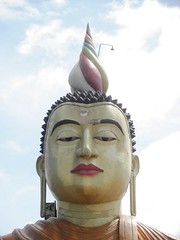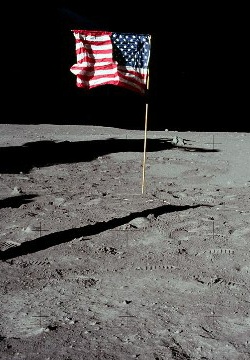Rat Temple. Exactly what it sounds like. I have known for some time, since before I even got to India, that one day I would come here, and I held this knowledge with a combination of dread and masochistic pleasure. Yesterday, I went to the rat temple, and it was....well, read on.
I am currently writing this in the middle of goddamn nowhere, the village of Kolayat to be precise, a place so uneventful that directly asking any local person to tell me something interesting about Kolayat results in stares and silence.
Several days ago from a mountaintop temple in the village of Galta outside Jaipur, I was watching several of the 4000-odd monkeys at the temple complex jump into one of the cascading pools in the narrow ravine when I had a revelation that surprisingly had nothing to do with being surrounded by 4000 monkeys: the sky should not be brown. Jaipur is disgusting so I booked a train ticket to the rarely-visited desert city of Bikaner, which is also disgusting.
The train was 2nd-class only, which I knew meant absolutely no effort would be expended to make the service efficient or remotely timely, and that I was effectively sentencing myself to an indefinite period aboard an insalubrious rattletrap. The train was initially cramped and unpleasant but became spacious as more and more people had the good sense to go no further on this sand-filled rolling litterbox to nowhere. On the way we passed the Sambhar Salt Lake, which like all Rajasthani lakes is a misnomer and should just be called Sambhar: Your One-Stop Emporium For Salt And Sand. We stopped at a village called Salt City, whose livelihood was clearly the single industry of isolating salt from giant piles of sand. I felt the strange urge to get off the train and talk to the salt de-sanders about their lot in life but feared that if I entered Salt City I would never be allowed to leave.
Finally, late at night, after many moments of excitement ("Look, more shrubs!"), we got to the city of Bikaner, which is hot, dry, smelly, slightly sleazy, and generally unpleasing to the eye, but for some reason I really like it. It has a sort of Wild West atmosphere, being made of half a million people maintaining a tenuous connection to the rest of civilization on the fringes of the habitable world. Nothing grows in the arid wastes around town but camel feed. Two narrow highways crossed by the bulky and florid Tata trucks provide the only lifeline for supplies from the outside world. From the edge of the city nearly every good is still transported into and across town in great wobbling heaps on camel-drawn carts. People move by motorbike, but Bikaner's famously strong camels dragging their gargantuan loads steadily through the bustle of the city is still very much the way of life in a place where electricity and the motor engine have given the people a new energy. Throughout Bikaner there is not the sense of a chaotic decline into 21st-century poverty so prevalent elsewhere in India. Here the chaos is invigorating, a promise of modernity for a town that for centuries was defined by its stark isolation.
The first place I visited in Bikaner was its famous fort, which did not look that strong but has never been conquered. At some point even the Rajputs would have to stop and ask themselves just how many lives they were willing to throw away over Bikaner. It also helped that even on the Rajput scale the Rajas of Bikaner were absurdly bellicose. As if repeatedly and bloodily smashing Mughal invasions wasn't enough, the Rajas of Bikaner were so fond of warfare that they actually volunteered their forces to British service in World War I and their armory proudly displays German machine guns captured on the Western Front. As if this wasn't martial enough, the centerpiece of the grand hall is a fully-constructed biplane, as the British could think of no more fitting gift to the Raja (who is shown in full military splendor attending the Treaty of Versailles) than the then-epitome of mechanized warfare. The palace within the fort was quite beautiful, and of course open to the public because the Raja now lives in a more modern palace across town. Most of the Rajput Rajas these days live in their dynasties' 20th-century palaces due to changing royal tastes and advances in domestic technology. You can run air-conditioning and plasma-screen TV's in a rewired palace from 1920 but not on an intricate system of feathers and pulleys.
The next day I went to two of the strangest temples I think I shall ever see. The first was the Rat Temple. Catching a bus across the desert, I ventured to the town of Deshnok where in the confines of its infamous temple the reincarnated souls of dead members of the storyteller caste shielded from the Lord of Death by a medieval Hindu saint receive sanctuary in the bodies of holy rats. Though not as bad as it could be, given the possibility of a swarming sea of rats, it is still a foul and vile place. As it is a Hindu temple, you must enter barefoot, and as it is full of unseemly numbers of rats it is also full of unseemly amounts of rat poop. The air is stale with dry rat shit and there is the constant motion of small darting rats which teem from every nook and cranny. Sometimes they dash right at you and in your evasive motions you must take great care not to step on one, because this would entail purchasing a golden rat idol to make amends, and because it would be fucking disgusting.
It is considered extremely lucky for a rat to run across your feet, and I'd be damned if I was going to lug my ass all the way across the desert to this shithole and not participate. As the rats are not especially accommodating, some measure of connivance is required to entice the rats over your feet rather than around them. What you should do is stand in a narrow space directly between a large group of hungry-looking rats and a large mound of something edible, then close your eyes and wait.
Actually, no. Don't ever do this. If you do, go immediately back to your home and develop a serious hallucinatory drug habit, because that is the only way you will ever be able to dream about anything else again.
Returning to Bikaner I went straight into the walled old city, a medieval labyrinth of old painted mansions and outdoor public gambling in which I promptly got extremely lost. It was in these wanderings that I stumbled across what I shall now coin as the Butter Temple. There is a large and beautiful Jain temple in Bikaner and the jolly priest (Jains tend to be jolly) was most pleased to tell me about its art and history. Evidently, the temple predates the city and was built for unclear reasons in an empty wasteland without a drop of water, making it impossible to mix the cement. So in lieu of water they mixed the cement with some 40,000kg of butter. How they had this much butter handy but no water eludes me almost as much as what could possess anybody to contemplate mixing cement with butter. To this day when it gets particularly hot, butter and grease seep up through the floor. It was just hot enough for some butter and grease to be coating the passage to the rear of the main shrine. Needless to say this was a much more pleasant, though no less bizarre, barefoot experience than the Rat Temple and it left me with the desire to put cupcake batter on my feet and lie in the sun until I have the world's most delicious ankle socks.
Today I came to Kolayat, a village so lifeless I was warned against coming. It is a very peaceful place. To my great shock, the lake even has water and water-lilies in it. I wandered around the village for some hours, crossing to its far side and the edge of the desert, from which point there was literally no human life for hundreds of miles and across the Pakistani border. At this fringe of civilization is a public high school, and as I stood there attempting to bask in the emptiness of it all, I was instead the object of ridicule for about 50 yabbering ninth-graders. I feel this says something profound about humanity.
There are two types of people in Kolayat: regular people who are bored out of their minds, and holy people who are stoned out of their minds. Both desperately seek your company and both will transmit their condition to you in a very short period of time. I will leave you to guess which type of person I chose to spend more time with. So here I am in Kolayat, writing verrrryyyyy slowly and sloppily in my notebook, trying to gain some sort of truth out of the inanity of it all, and having deep thoughts about reincarnation, rats, and purified butter. Like seriously, where did all that butter come from?
Subscribe to:
Post Comments (Atom)









No comments:
Post a Comment
Commenting Rules:
1)No spam, viruses, porn etc.
2)DO NOT POST GF-B's REAL NAME
3)Remember this is a public website, don't provide sensitive info about yourself in the internet!